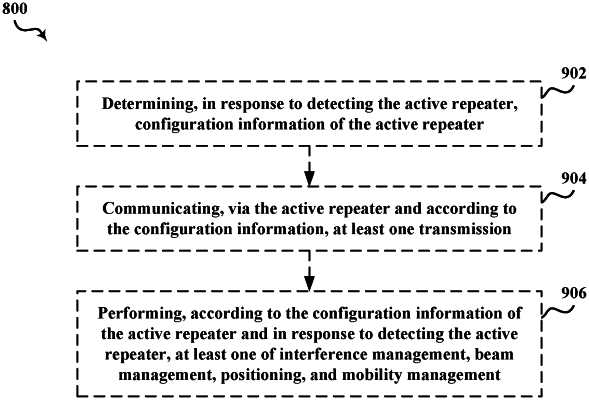| CPC H04B 17/309 (2015.01) [H04B 7/15 (2013.01); H04L 5/0048 (2013.01); H04L 5/14 (2013.01); H04L 43/16 (2013.01); H04W 52/241 (2013.01)] | 18 Claims |

|
1. A method of detecting a repeater on a propagation path at a transmitting device of a wireless communication network, comprising:
receiving, from a controlling entity, a repeater detection configuration indicating a detection threshold and at least one transmit power level;
transmitting, to a receiving device via the propagation path and according to the repeater detection configuration, a first signal at a first power level;
receiving, in response to transmitting the first signal, first measurement results of the first signal;
transmitting, to the receiving device via the propagation path and according to the repeater detection configuration, a second signal at a second power level, the second power level being different than the first power level;
receiving, in response to transmitting the second signal, second measurement results of the second signal;
detecting an active repeater on the propagation path in response to a difference between the first measurement results and the second measurement results satisfying the detection threshold;
determining, in response to detecting the active repeater, configuration information of the active repeater;
performing, according to the configuration information of the active repeater and in response to detecting the active repeater, at least one of interference management, beam management, positioning, or mobility management;
and
communicating at least one transmission via the active repeater and according to the configuration information of the active repeater.
|